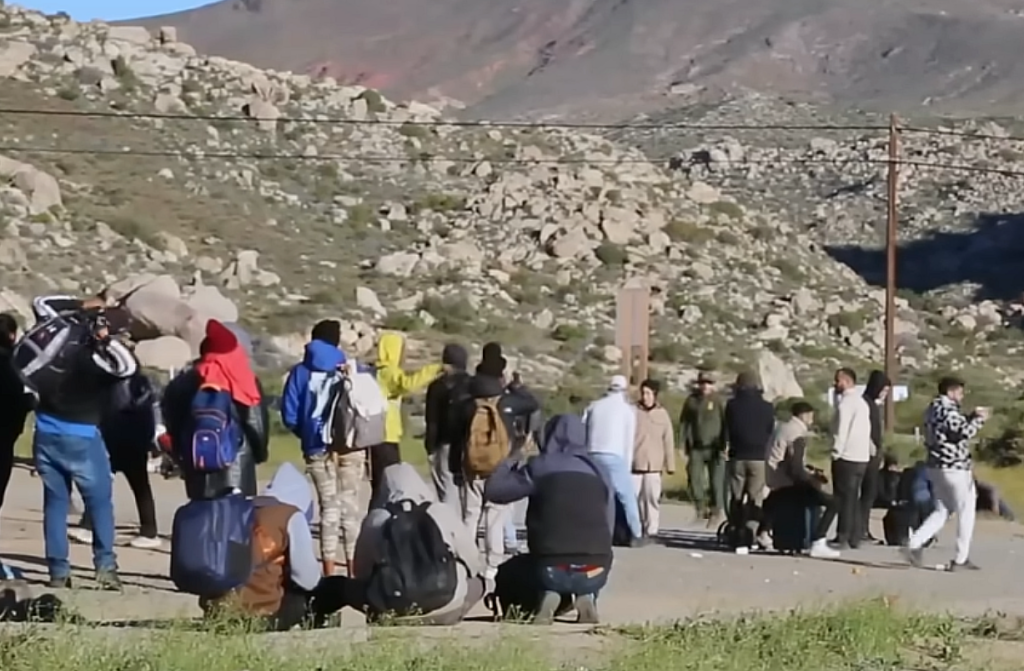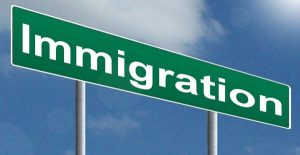
One common claim is that President Joe Biden and Vice President Kamala Harris have not taken action to address the border crisis. In fact, they backed a bipartisan effort, the Border Act of 2024, which was poised to pass earlier this year. The bill was a comprehensive immigration reform package designed to curb illegal crossings, strengthen the asylum process, and close loopholes exploited by criminal cartels.
However, despite gaining significant support from both sides of the aisle, the bill ultimately failed—not because it was ineffective, but because former President Donald Trump publicly denounced it. His opposition created a political roadblock, as Trump’s influence over Republican lawmakers meant that many who were previously on board suddenly reversed their positions.
The Border Patrol Union Endorsed the Bill
The claim that this bill wasn’t a serious effort is flat-out wrong. One of the most notable endorsements came from the National Border Patrol Council (NBPC), the labor union representing over 18,000 Border Patrol agents. This is significant because the NBPC had endorsed Trump in the 2020 election. Yet, the union stated clearly that the bipartisan bill “would drop illegal border crossings nationwide” and help agents regain control of border security.
The bill’s provisions were designed to end the practice of catch-and-release, streamline the asylum process, and provide new resources to manage migrant surges. It even included a mechanism to temporarily shut down the border if the number of encounters exceeded 5,000 per day, ensuring that the system would not be overwhelmed. Despite criticism from some conservative lawmakers, the bill was seen as one of the most comprehensive efforts in decades to manage the border effectively.
Trump’s Role in Killing the Bill
The biggest obstacle to this bill wasn’t its content—it was Donald Trump. Initially, there was optimism that the bill would pass with bipartisan support. Even Senate Minority Leader Mitch McConnell encouraged his fellow Republicans to vote for it. But when Trump came out against the legislation, the political landscape shifted overnight.
Trump’s opposition wasn’t based on the bill’s merits but on his desire to campaign on the message that only he could fix the border crisis. Passing the Border Act under Biden’s administration would have undermined that narrative. Trump labeled the bill a “gift to Democrats” and pressured Republicans not to support it. His influence proved powerful, as only four Republican senators ultimately voted in favor of the bill. Even McConnell, who had co-authored and championed the bill, voted against it after Trump’s intervention.
As Vice President Kamala Harris pointed out in a recent debate, Trump “preferred to run on a problem instead of fixing a problem.” His strategy was clear: keep the border crisis unresolved to fuel his 2024 campaign.
What Really Happened?
The collapse of the Border Act of 2024 is a story of political influence, not policy failure. The bipartisan bill addressed key concerns about illegal crossings, asylum backlogs, and border security. The National Border Patrol Council saw it as a solution to many ongoing problems, yet it was stifled by Trump’s political agenda.
While the Biden administration supported this bipartisan effort, Trump’s pressure on Republican lawmakers ensured its defeat. The result? Continued border challenges that could have been addressed months ago.



In reality, the claim that Biden and Harris “did nothing” about the border is inaccurate. They were part of a collaborative, bipartisan push to bring real reform. But when politics trumped policy, the chance for meaningful change slipped away—ironically, because of a president who once ran on a promise to solve this very crisis.
The border bill wasn’t perfect, but it was a significant step forward. And it’s time to set the record straight. The Biden administration didn’t ignore the border crisis; their efforts were blocked by the very person who claims only he can fix it.
Facts and Myths About the Border Bill
The Bipartisan Border Security Package was met with misinformation and misconceptions before it was ultimately defeated by Republican opposition. Here’s a breakdown of some of the most common myths about the bill and the actual facts behind it.
Myth: The bill w ould have forced migrants fleeing dangerous situations to return home.
Fact: The bill was designed to uphold American values by ensuring a fair and efficient asylum process. Migrants who faced genuine persecution would have received protection, while those without valid claims would have been swiftly removed. This streamlined system aimed to prioritize those in need and prevent the system from being overwhelmed.
Myth: The President already had all the power needed to secure the border.
Fact: The U.S. Department of Homeland Security (DHS) lacked the resources and updated policies needed to fully manage the border crisis. The bill sought to address gaps that previous administrations—under Biden, Trump, Obama, and Bush—also struggled with. By providing DHS with new authorities, the bill would have enabled the agency to close the border when overwhelmed, regardless of the administration in power.
Myth: The bill would have made the border crisis worse by allowing 5,000 migrants into the country per day.
Fact: The bill included a provision called the Border Emergency Authority (BEA), which would have allowed DHS to close the border if daily encounters exceeded 5,000. This safeguard was put in place to ensure the system wouldn’t be overwhelmed by surges and would only reopen when operational control could be restored.
Myth: Migrants would have been paroled into the U.S. without restrictions.
Fact: The bill did not expand parole for migrants crossing the border unlawfully. Instead, it would have ensured that migrants who did not qualify for asylum were swiftly removed from the U.S. It retained humanitarian parole for emergencies but enforced stricter standards for those entering unlawfully, ensuring proper processing and removal.
Myth: The bill would have provided taxpayer-funded legal counsel for all migrants.
Fact: The bill only offered government-appointed counsel to young, unaccompanied children—not adults. For adults, the bill confirmed their right to hire an attorney, but any legal representation would have been at their own expense.
Myth: The bill eliminated due process for migrants.
Fact: The bill aimed to strengthen due process by speeding up the handling of asylum claims and reducing the backlog. Migrants would have been able to request administrative review of their claims within a much shorter timeframe. This provision was meant to ensure faster, fairer decisions without the years-long delays that currently burden the system.



Myth: The bill would have allowed all undocumented migrants to receive work permits.
Fact: Only migrants who passed a higher-standard asylum screening would have been eligible for work permits under this bill. Migrants who failed to meet the standard would have been removed from the country. The bill focused on granting work permits only to those with legitimate claims to protection.
In the end, despite the comprehensive approach to fixing border security issues, the Bipartisan Border Security Package failed to pass. Misinformation about the bill’s provisions played a role, but the final blow came from political pressures, including opposition from key figures within the Republican Party. While the bill aimed to address the border crisis in a balanced and practical way, it ultimately did not become law.






